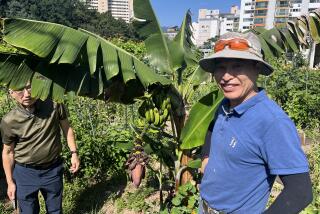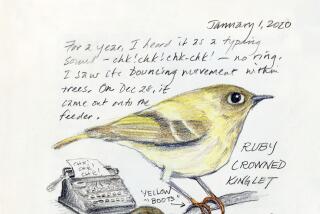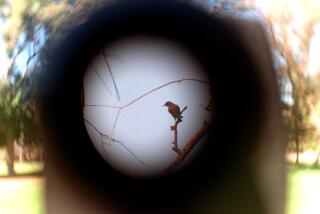Can birds help connect North Korea to the world?
BAEKRYEONG ISLAND, South Korea — A pair of red-rumped swallows circled overhead, dancing amid wispy clouds before disappearing. A young male Chinese sparrowhawk emerged before he too became a shrinking dot in the blue sky.
From Baekryeong, South Korea’s northernmost island, Nial Moores tracked the birds through his scope.
“They’ll be in the DPRK in 15, 20 minutes,” he said.
That would be the Democratic People’s Republic of Korea, or North Korea — across one of the most heavily fortified borders in the world.
Guarded by hundreds of thousands of soldiers and untold artillery, the border means little to the millions of birds that soar over it each year as they travel along a major migration corridor between the Arctic Circle and East and Southeast Asia, and as far south as Australia and New Zealand.
Moores, a 56-year-old British conservation scientist, has spent more than two decades observing, chronicling and advocating for birds in South Korea. In recent years, he’s made a dozen trips to North Korea to study its birds and nudge along conservation efforts there.
But in a place like North Korea, where humans lead precarious lives under the threat of hunger and persecution, where a dictatorship is building a nuclear arsenal that threatens the world order, what do birds and wetlands matter? It’s a question many have asked him.
Moores has come to believe birds have the answer — if only more people would take the time to be among them and listen.
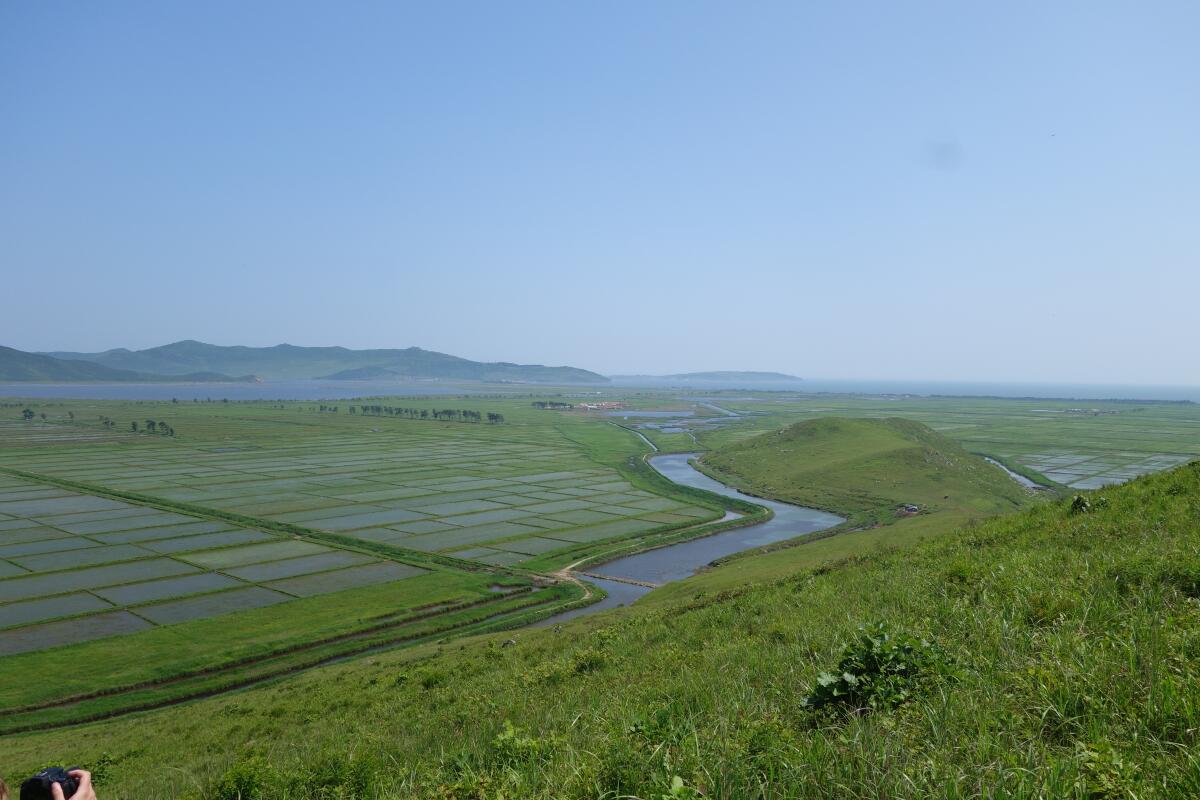
The visits to North Korea began in 2014, when Moores and a group of other scholars and conservationists arrived on a drizzly spring day toting high-end scopes, fancy binoculars and large cameras.
To the customs officials inspecting their equipment at the border, the items looked as if they’d work just as well for spying and aroused suspicion. Birding was a completely esoteric and perplexing concept for rural bureaucrats in a nation with little contact with the outside world.
The trip, sponsored by the United Nations and a German foundation, was a rare instance of North Korea opening itself up to outside research and expertise.
The aim was to survey migratory birds, their habitat and wetlands near the Tumen River delta, in the northeastern corner of North Korea near the border with China and Russia.
Over six days observing expansive wetlands, the visitors counted tens of thousands of birds and logged 110 species, 10 of them endangered species and two recorded for the first time in North Korea.
The researchers were so cut off from the outside world that they didn’t learn until later that during their trip the North Korean government had launched two medium-range ballistic missiles into the Sea of Japan, also known as the East Sea.
To the birds, however, both Koreas are simply a strip of land that juts out from northeast China and a corner of Siberia — the most efficient path for birds to take on their path of migration down south.
Many coastal regions of North Korea make for particularly attractive pit stops for the birds because they remain largely undeveloped, unlike South Korea, and increasingly, China.
The trips by researchers are part of a broader attempt by the international community to nudge North Korea out of its rogue ways by engaging it on matters other than nuclear weapons and human rights — environmental issues, cultural exchanges, sports.
Moores and others say that North Korean officials have expressed interest in conservation because the country’s food supply depends so heavily on agriculture.
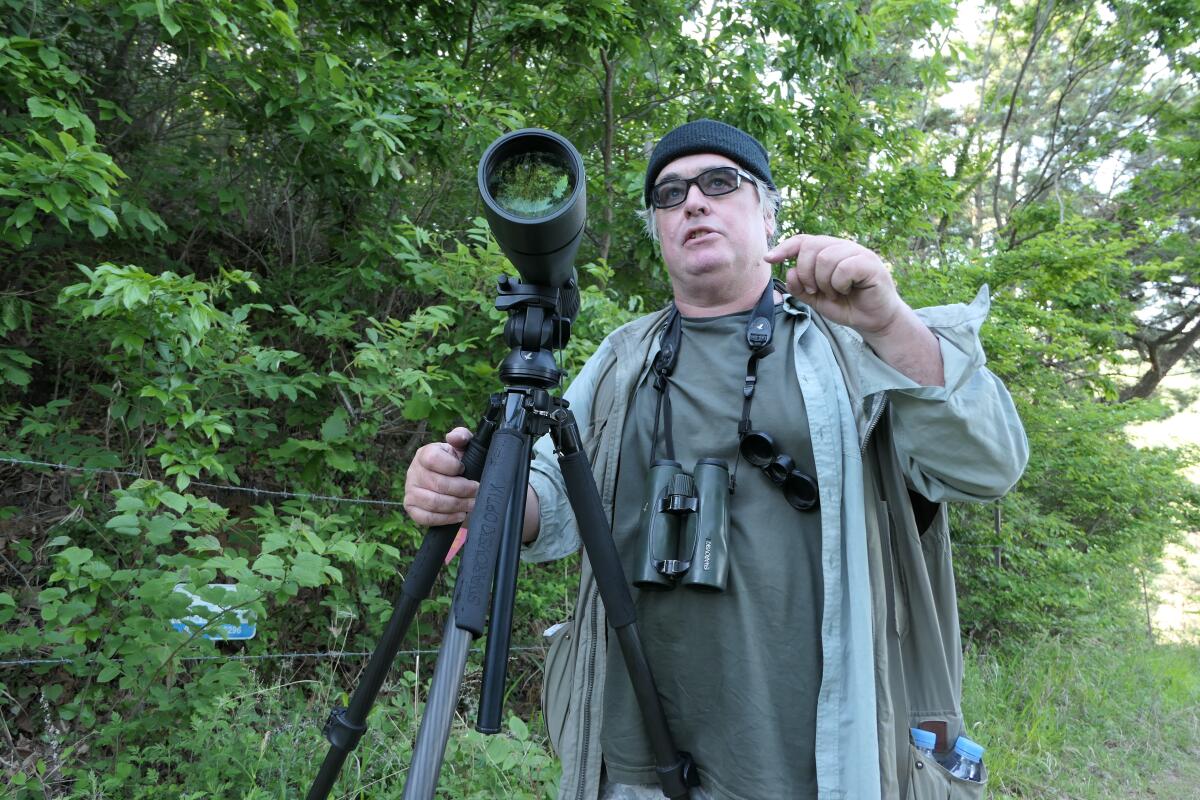
Moores was born in Southport, England, with a medical condition that severely impaired his hearing, so he lived largely in silence until he was 4, when surgery allowed him to hear for the first time.
The first sound he heard upon leaving the hospital was a screeching car, an abhorrent noise that left him wishing for the quiet.
A few nights later, though, alone in the dark in his room, he heard what to him sounded like angels trumpeting. The notes grew louder and louder, cutting through the blanket of the night.
His parents later told him it was the song of wild geese.
“The sounds reached into the room and opened up my world,” he recalled. “I was no longer this little being alone in the dark.”
This spring on Baekryeong Island, he listened attentively to the avian orchestra in the bushes.
More than 100 miles from mainland South Korea but less than 10 from North Korea, the island is an important stopover for birds en route to North Korea from China or Southeast Asia.
It’s also, in Moores’ assessment, “a great place for all kinds of strays and waifs like myself.”
In the chorus of birdsong, he easily found his target: a black bulbul, a species native to South Asia and southern China.
A day earlier, he made the first documented sighting in Korea — a thrilling accomplishment. The bird appeared to have been thrown off course during a storm.
Up the road, barbed wire surrounded one of the many military installations that dominate the island. The Koreas technically remain at war, as made clear by the numerous road signs warning of mines and stray bullets from a nearby shooting range.
The minefields are great for birds, Moores said, because it protects the area from South Korea’s aggressive urbanization.
“It gives nature more of a chance,” he said.
Moores, who has lived in South Korea since 1998, heads Birds Korea, a small nonprofit based in the city of Busan.
When he started making trips to North Korea, about a third of the members quit in protest. Like many South Koreans, especially the older generation that remembers the war, they viewed the North as an enemy state.
For Moores, though, it’s always been apparent that learning about North Korea’s birds would help connect people of both Koreas.
He repeatedly points out to whoever will listen that birds hold the same important cultural role in North and South Korea — the Mandarin duck, for instance, symbolizes the union between husband and wife in both — and that they are indicators of environmental and ecological challenges that know no borders, like climate change or dwindling biodiversity.
“Through this focusing on conserving shared natural resource base, it’s possible for people to see what connects them rather than focusing on what separates them,” he told a group of South Korean bureaucrats in a June seminar.
And besides, 90% of Korea’s birds are migratory, neither North Korean nor South Korean — just like its people before 1945.
As Moores has continued to visit North Korea, some of his local guides and minders have grown accustomed to the eccentric Brit with unruly hair, sensitive hearing and a keen interest in their birds.
Soldiers have interrupted bird surveys, ordering them to leave certain areas without explanation.
Local farmers have ventured over to see what he’s doing, and Moores has excitedly directed them to peer through his scope.
The trips have taken Moores to corners of North Korea few outsiders have seen.
He’s observed some telltale signs of food shortages: farmers plowing fields with oxen, deforested mountains and stressed soil. He’s seen the dramatic disparity between the rapidly changing capital, Pyongyang, and the countryside, which has barely changed since the 1950s.
Since Moores began his work, North Korea has also started working with the international community to save its wetlands and birds.
Last year, the country signed onto the Ramsar Convention for wetlands protection, designating two areas — the Rason and Mundok migratory bird reserves surveyed by Moores — as conservation sites. The country has also joined the East Asian-Australasian Flyway Partnership, an alliance for the protection of migrating waterbirds.
Moores hopes these interactions will slowly bring about change behind North Korea’s ironclad borders.
“Maybe with more exposure, there’s a little less paranoia, a little less aggression,” he said.
His latest pitch to North Korea has been ecotourism. Bird-watching is a multibillion-dollar industry internationally, and especially with increasing interest in birding in China, he’s making the case to North Korea that preserving its rich bird population could also be an economic boon.
Earlier this year, Moores took two groups of birders, from Shanghai and Hong Kong, to the Rason reserve. They were amazed by the number of birds, mix of species and close-up views of rare fowl.
Given the volatility of the geopolitics surrounding North Korea, it will probably be years, if not decades, before any Americans or South Koreans are allowed to go bird-watching in North Korea.
That day, though, Moores believes, the birds and the humans across borders will all be the better for it.
More to Read
Sign up for Essential California
The most important California stories and recommendations in your inbox every morning.
You may occasionally receive promotional content from the Los Angeles Times.
